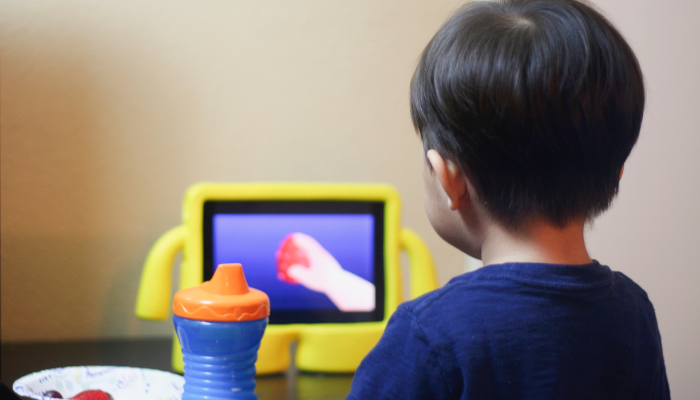
Managing Screen Time Without the Struggle

In today’s tech-savvy world, managing screen time has become one of the most significant challenges for parents. With devices constantly vying for our children’s attention, setting healthy boundaries without the daily battles can feel like an uphill task. But don’t worry — you’re not alone. This guide will help you navigate the complexities of managing screen time in a way that feels calm, supportive, and achievable.
Why Is Managing Screen Time Important?
Screens are everywhere. They entertain, educate, and connect us, but too much screen time can lead to problems such as:
- Sleep disturbances: Excessive screen use, especially before bed, can affect melatonin levels and disrupt sleep patterns.
- Reduced physical activity: More time on screens often means less time for outdoor play and exercise.
- Behavioral issues: Overuse can lead to mood swings, irritability, and reduced attention spans.
- Social skills impact: Children who spend more time on screens may miss opportunities to engage in face-to-face interactions, hindering their social development.
- Academic challenges: Excessive screen time can reduce focus and productivity, affecting school performance.
Understanding these impacts can help motivate you to take a proactive approach to managing screen time without the struggle.
Step-by-Step Guide to Manage Screen Time
1. Set Clear and Consistent Rules
Children thrive on structure. When it comes to screen time, clear boundaries are essential.
Checklist:
- Decide on daily limits based on your child’s age (e.g., 1 hour for younger children, 2 hours for older kids).
- Create a family screen time schedule that includes when screens are allowed and when they’re not (e.g., no screens during meals or 1 hour before bedtime).
- Communicate these rules clearly to your child and explain why they are important.
- Regularly revisit and update the rules as your child grows and their needs evolve.
Reminder: Consistency is key. Sticking to these rules will help your child adapt quickly.
2. Be a Role Model
Children learn more from what we do than what we say. If you’re constantly glued to your phone or TV, it’ll be hard to convince them to limit their gadget usage.
Checklist:
- Set a good example by putting your devices away during family time.
- Show them alternative activities you enjoy, like reading, gardening, or exercising.
- Practice “device-free” moments, such as a family game night.
- Avoid multitasking with screens, like scrolling through your phone during conversations.

3. Offer Engaging Alternatives
Often, kids turn to screens out of boredom. By providing fun and engaging non-screen activities, you can make it easier for them to step away.
Ideas to Try:
- Arts and crafts projects
- Outdoor games or sports
- Reading books or storytelling
- Building puzzles or LEGO creations
- Cooking or baking together
- Organizing a scavenger hunt in your backyard or local park
Reminder: Encourage activities that align with your child’s interests to make them more appealing.
4. Create Device-Free Zones
Establishing areas in your home where screens are not allowed can help limit overuse and create healthier habits.
Checklist:
- No screens in bedrooms to promote better sleep.
- Make the dining room a screen-free zone to encourage family bonding.
- Set up a dedicated space for homework without distractions from devices.
- Designate one family room as a “tech-free relaxation zone.”
5. Use Parental Controls Wisely
Technology can be a helpful ally in managing screen time. Many devices and apps come with parental controls that can enforce limits and monitor usage.
Checklist:
- Enable screen time limits on devices.
- Block inappropriate content using filters.
- Use apps like Family Link to track and manage device usage.
- Customize settings for each child’s age and needs.
Reminder: Explain to your child why these controls are in place to avoid resistance.
6. Teach Time Management Skills
Help your child learn how to manage their time effectively. Teaching them to balance screen time with other activities fosters independence and responsibility.
Tips:
- Use visual timers to show how much screen time remains.
- Encourage the use of planners to organize homework, chores, and leisure time.
- Discuss the importance of prioritizing responsibilities before recreational screen use.
How to Handle Resistance
Let’s face it: reducing screen time might not be welcomed with open arms. Here’s how to handle pushback with patience and empathy:
1. Empathize with Their Feelings
Acknowledge that it’s hard to stop doing something they enjoy. Let them know you understand.
Example: “I know it’s fun to play your game, but watching too much phone isn’t healthy. Let’s find another activity you’ll enjoy.”
2. Involve Them in Decision-Making
When kids have a say in setting limits, they’re more likely to stick to them.
Example: “How about we decide together what a fair screen time limit looks like?”
3. Stay Calm During Tantrums
If your child becomes upset, stay calm and stick to the rules. Over time, they’ll learn to accept the boundaries.
4. Reward Positive Behavior
Create a reward system to motivate your child to follow screen time rules. Rewards don’t have to be material — extra playtime or a family outing can be just as effective.
Benefits of Healthy Screen Time Habits
By managing screen time effectively, you’re setting the stage for a happier, healthier family. Here are some benefits:
- Improved sleep quality: Less screen exposure before bed promotes better rest.
- Enhanced family connections: More device-free moments mean better bonding.
- Better academic performance: With fewer distractions, kids can focus on their studies.
- Healthier lifestyles: Encouraging outdoor play and physical activity keeps them fit.
- Boosted creativity: Reduced reliance on screens encourages imaginative play and critical thinking.

Quick Tips for Success
- Start small: Gradually reduce screen time instead of making sudden changes.
- Reward positive behavior: Praise your child for following the rules.
- Be flexible: Allow occasional exceptions, like movie nights or virtual playdates.
- Stay consistent: Mixed messages can confuse your child.
- Revisit and adjust: Periodically review your screen time rules as your child grows.
- Focus on quality over quantity: Ensure that the screen time your child does have is educational and age-appropriate.
Sample Family Screen Time Agreement
Our Family Rules for Screen Time:
- Daily Limit: Screens are limited to __ hours per day.
- Screen-Free Times: No screens during meals, family time, or 1 hour before bedtime.
- Device-Free Zones: No screens in bedrooms or the dining area.
- Chores First: Homework and chores must be completed before screen time.
- Content Rules: Only age-appropriate shows, games, and apps are allowed.
- Parental Controls: Devices will have time limits and filters enabled.
- Weekend Adjustments: Additional phone time allowed on weekends for family activities like movies.
Final Thoughts
Managing screen time doesn’t have to be a constant battle. By setting clear boundaries, staying consistent, and offering plenty of engaging alternatives, you can create a balanced approach that works for your family. Remember, it’s not about perfection but progress. With time, patience, and love, you’ll find a routine that benefits everyone.
Take it one step at a time, and don’t forget: you’re doing a fantastic job!
Frequently Asked Questions
- How much screen time is okay for my child?
The American Academy of Pediatrics recommends:
- For children under 18 months: Avoid screens except for video calls.
- For ages 2-5: Limit to 1 hour of high-quality content per day.
- For ages 6 and up: Consistent limits ensuring time for sleep, physical activity, and other important activities.
- What if I’m too busy to monitor screen time?
Use parental control apps to set limits automatically and create a routine where screen time aligns with your family’s schedule.
- How do I handle meltdowns when turning off devices?
Give advance warnings (e.g., “10 more minutes”), provide engaging alternatives, and stick to the rules calmly.
- What about educational screen time?
Educational content is valuable but should still be balanced with other activities to ensure a well-rounded routine.
Read Our Latest Article: Teaching Kids About Gratitude and Positivity